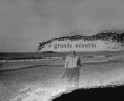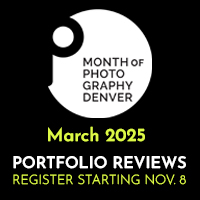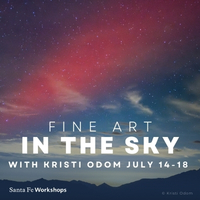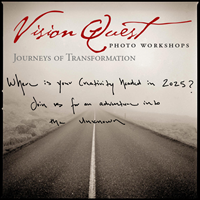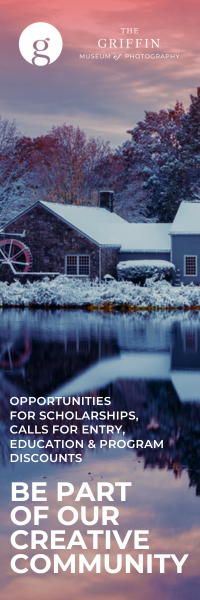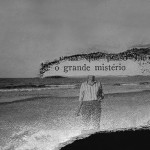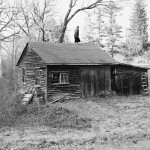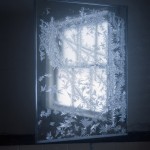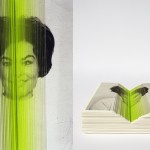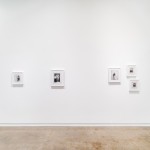Jim Kazanjian: Anomalies
![untitled[Implosion]_2008](http://lenscratch.com/wp-content/uploads/2013/11/untitledImplosion_2008-651x651.jpg) The combination of imagination and technology , in the right hands, takes us to places that are at once other-worldly and familiar. Photographer Jim Kazanjian has a creative vision that allows for new worlds to be created without a camera, culling images from the Internet to create his “hyper-collage” images. He has been recently rewarded for his imagination and talents by a nod from Critical Mass, putting his work in the top 50 portfolios for 2013.
The combination of imagination and technology , in the right hands, takes us to places that are at once other-worldly and familiar. Photographer Jim Kazanjian has a creative vision that allows for new worlds to be created without a camera, culling images from the Internet to create his “hyper-collage” images. He has been recently rewarded for his imagination and talents by a nod from Critical Mass, putting his work in the top 50 portfolios for 2013.
Jim received his MFA from the Art Center College of Design in ’92. His BFA was completed at the Kansas City Art Institute in ’90. He has worked professionally as a commercial CGI artist for the past 18 years in television and game production. Various clients he has collaborated with include: Nike, Adidas, NBC, CBS, HBO, NASA, HP, Intel and others. He currently lives in Portland, Oregon.
As essay by Alison Nastasi follows the imagery.
Anomalies
My images are digitally manipulated composites built from photographs I find online. The technique I use could be considered “hyper-collage”. I cobble together pieces from photos I find interesting and feed them into Photoshop. Through a palimpsest-like layering process of adding and subtracting, I gradually blend the various parts together. I am basically manipulating and assembling a disparate array of multiple photographic elements (sometimes more than 50) to produce a single homogenized image. I do not use a camera at any stage in the process.![untitled[Chateau]_2011](http://lenscratch.com/wp-content/uploads/2013/11/untitledChateau_2011-651x651.jpg) My method of construction has an improvisational and random quality to it, since it is largely driven by the source material I have available. I wade through my archive constantly and search for interesting combinations and relationships. Each new piece I bring to the composition informs the image’s potential direction. It is an iterative and organic process where the end result is many times removed from its origin. I think of the work as a type of mutation which can haphazardly spawn in numerous and unpredictable directions.
My method of construction has an improvisational and random quality to it, since it is largely driven by the source material I have available. I wade through my archive constantly and search for interesting combinations and relationships. Each new piece I bring to the composition informs the image’s potential direction. It is an iterative and organic process where the end result is many times removed from its origin. I think of the work as a type of mutation which can haphazardly spawn in numerous and unpredictable directions.![untitled[Exterior]_2010](http://lenscratch.com/wp-content/uploads/2013/11/untitledExterior_2010-651x651.jpg) I’ve chosen photography as a medium because of the cultural misunderstanding that it has a sort of built-in objectivity. This allows me to set up a visual tension within the work, to make it resonate and lure the viewer further inside. My current series is inspired by the classic horror literature of H.P. Lovecraft, Algernon Blackwood and similar authors. I am intrigued with the narrative archetypes these writers utilize to transform the commonplace into something sinister and foreboding. In my work, I prefer to use these devices as a means to generate entry points for the viewer. I’m interested in occupying a space where the mundane intersects the strange, and the familiar becomes alien. In a sense, I am attempting to render the sublime.
I’ve chosen photography as a medium because of the cultural misunderstanding that it has a sort of built-in objectivity. This allows me to set up a visual tension within the work, to make it resonate and lure the viewer further inside. My current series is inspired by the classic horror literature of H.P. Lovecraft, Algernon Blackwood and similar authors. I am intrigued with the narrative archetypes these writers utilize to transform the commonplace into something sinister and foreboding. In my work, I prefer to use these devices as a means to generate entry points for the viewer. I’m interested in occupying a space where the mundane intersects the strange, and the familiar becomes alien. In a sense, I am attempting to render the sublime.![untitled[LowTide]_2009](http://lenscratch.com/wp-content/uploads/2013/11/untitledLowTide_2009-651x651.jpg)
The Surreal, Architectural Horror of Jim Kazanjian
by Alison Nastasi, January 2012
Studying Jim Kazanjian’s work, it’s not surprising to find out that the artist’s favorite horror film is The Shining. Kubrick’s use of the Overlook Hotel as a device to twist our inherent anxieties about isolation and vulnerability — in a space that simultaneously feels massive and suffocating — touches upon some of the same themes Kazanjian references in his surreal architectural photo collages.
Nor is it far-fetched to imagine the reasons behind the artist’s “strong obsession” with The Cat and the Canary screen canon (the 1978 version by Radley Metzger is his favorite), as each movie’s shadowy passageways and strange interiors could easily be fragments of Kazanjian’s dream-like, crumbling structures.
The Portland-based photographer has also been looking at M.R. James’ ghost stories and feels particularly drawn to H.P. Lovecraft’s dark cosmology, which has informed his body of work. “The idea of an ancient, unspeakable evil hibernating in deep space is just too captivating,” the artist mused during our recent interview. But Kazanjian’s disorienting creations are far more than the sum of his influences.
An established CGI artist in television and game production, Kazanjian’s “hyper-collage” has more in common with his commercial career than might appear at first glance. “My interest in gaming stems from my fascination with architecture and its potential to generate narrative structures,” Kazanjian shared. “My time in game development has definitely informed my photographic work. I find that the immersive qualities in both mediums have a strong correlation.”
Also immersive is Kazanjian’s extensive process of hunting and gathering, sacrificing pieces and rescuing images from Internet obscurity. Random snapshots of sinkholes, ominous fog, dense wreckage, and billowing smoke transform into the brooding icons of an otherworldly dimension. His archive of photo references contains almost 30,000 images and has been growing since 2005. “I cobble together pieces of photographs that I discover online and feed them into Photoshop … I eventually merge these various parts together.” It’s a deceptively simple, organic process that relies heavily on the element of surprise and toys with the inherent authenticity of the photographic medium. “I think nostalgia for the past is one of the things that makes photography so potent … It is still viewed, in many ways, as an objective medium. It has a very seductive quality.”
Intertwined with psychological horror, Kazanjian’s anomalies aim for a sense of foreboding and mystery, playing upon the visual archetypes he alludes to — haunted house tropes, an elusive menace, and supernatural terror. It’s a shifting, palpable anxiety that is at once majestic and beautiful. “For me, horror is the unraveling of the known into the unknown, and when the mundane becomes strange. In a sense … I am making an attempt to render the sublime.”
Posts on Lenscratch may not be reproduced without the permission of the Lenscratch staff and the photographer.
Recommended
-
Carolina Krieger: The intertwining of the abyssDecember 28th, 2024
-
Sylvia Sanchez: Out of the OrdinaryDecember 27th, 2024
-
Interview with Dylan Hausthor: What the Rain Might BringDecember 23rd, 2024
-
Julie Anand & Damon Sauer: Art + Science Competition Second Place WinnersDecember 17th, 2024
-
Photography Educator: Eliot DudikDecember 13th, 2024

![untitled[Object]_2011](http://lenscratch.com/wp-content/uploads/2013/11/untitledObject_2011-651x651.jpg)
![untitled[Outpost]_2008](http://lenscratch.com/wp-content/uploads/2013/11/untitledOutpost_2008-651x651.jpg)
![untitled[Temple]_2012](http://lenscratch.com/wp-content/uploads/2013/11/untitledTemple_2012-651x651.jpg)
![untitled[Tomb]_2012](http://lenscratch.com/wp-content/uploads/2013/11/untitledTomb_2012-651x651.jpg)
![untitled[Vehicle]_2013](http://lenscratch.com/wp-content/uploads/2013/11/untitledVehicle_2013-651x651.jpg)
![untitled[Backyard]_2011](http://lenscratch.com/wp-content/uploads/2013/11/untitledBackyard_2011-651x651.jpg)
